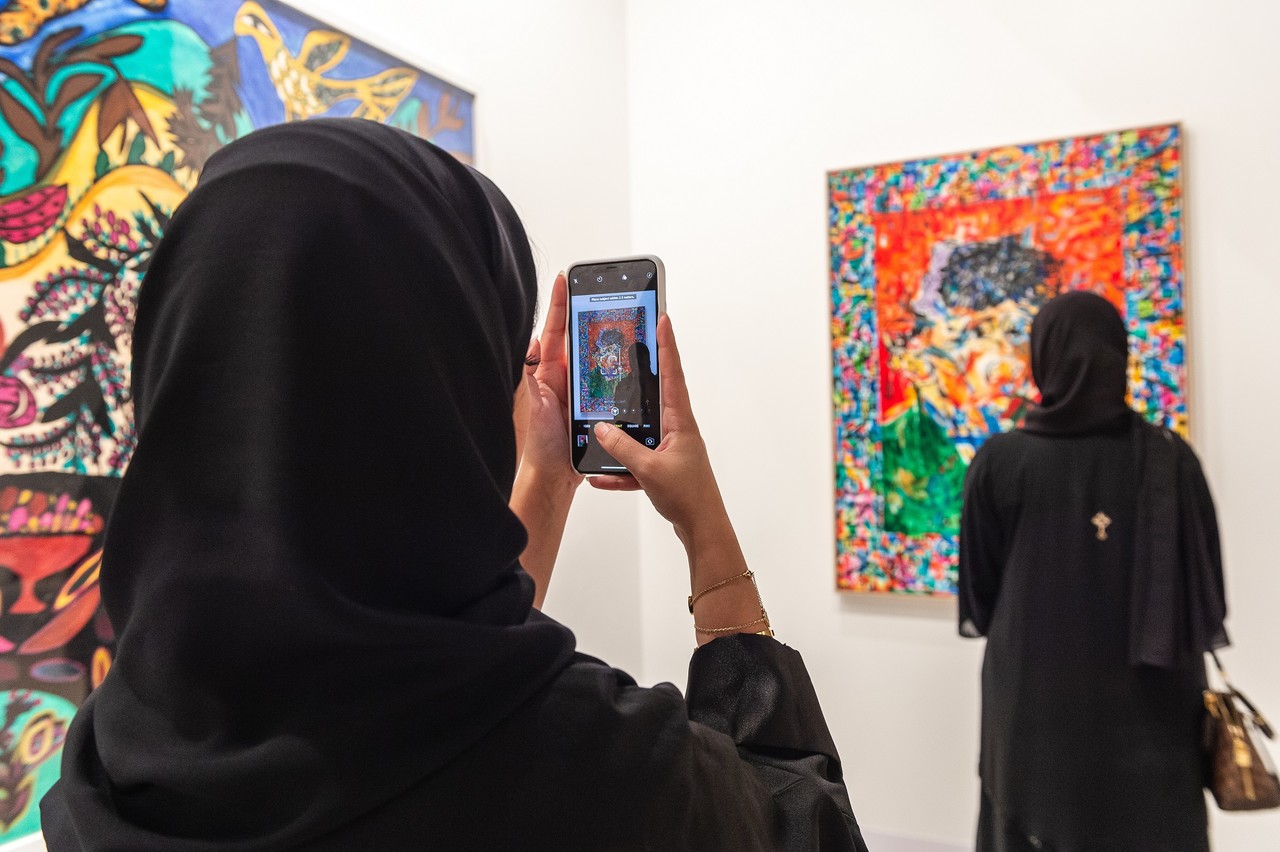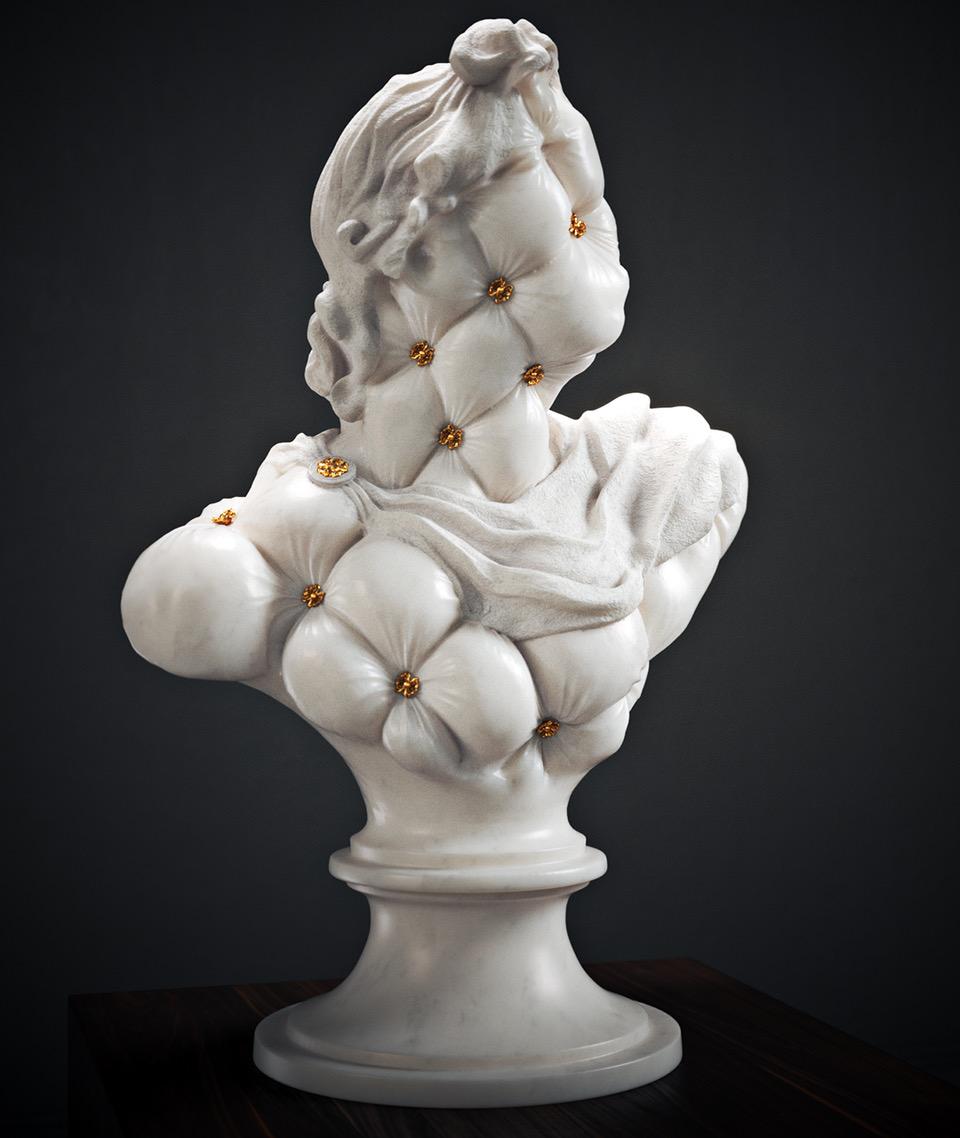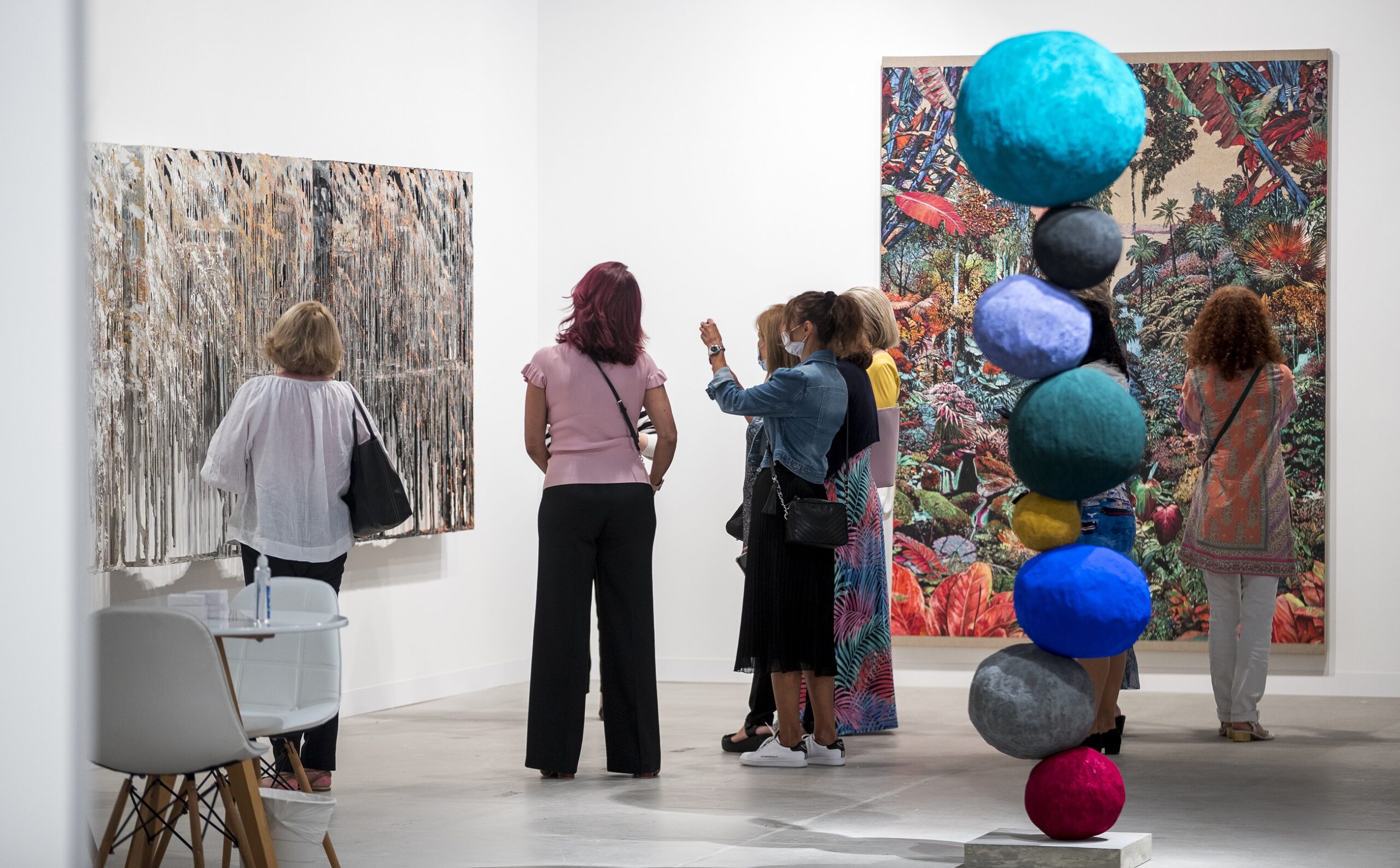Today, as the Strip endures yet another chapter of catastrophic destruction and ongoing genocide, this series feels not only prescient but painfully urgent. Using mixed media, acrylic and spray paint, Joha transforms the canvas into metaphorical walls. These are not blank surfaces; they are scarred, layered, weathered by time and loss.

Traces of Arabic text, as if sprayed on the walls with letters and words like Gaza, Victory and Intifada, flicker in and out of visibility, like the fragments of a silenced history. Faded faces emerge, often martyrs, sometimes anonymous figures, appearing and disappearing, layered over one another as if memory itself were struggling to hold on. Abstracted patterns from demolished homes reappear as delicate wreaths, symbols of life harshly interrupted, of beauty suspended in collapse.

Acrylic, spray paint and mixed media on canvas, 95 x 75 cm
The walls of Gaza, once covered with graffiti, martyr portraits, and political slogans, become a source of memory and mourning. Many of these walls have since been obliterated by Israeli bombings, their stories buried beneath concrete and dust. But in Joha’s works, their voices rise again: distorted, partial, but insistent.
Joha does not offer clear narratives or resolved images. Instead, he paints the condition of rupture: the tension between what was and what is gone, between what we remember and what has been deliberately erased. In doing so, he places himself within the struggle, not only as a witness from afar but as someone grappling with the role of the artist in times of collective suffering.

Gaza: Between Rubble and Memory is a visual archive born from loss, resistance, and longing. It insists that even when a place is shattered, its stories survive. Through Joha’s layered compositions, Gaza speaks not as a victim, but as a voice still standing amid the genocide.
For more information, please visit https://artspaces.kunstmatrix.com/.



